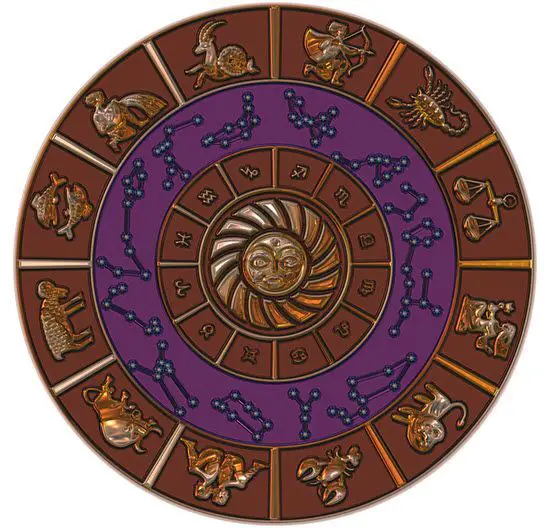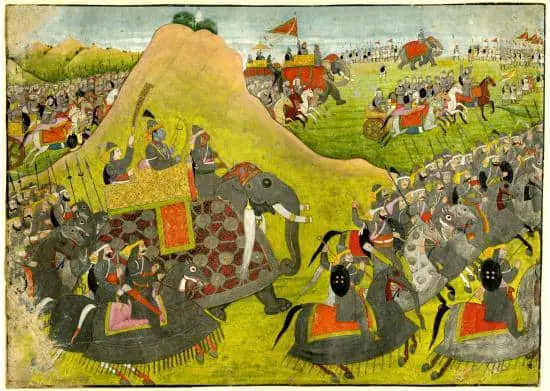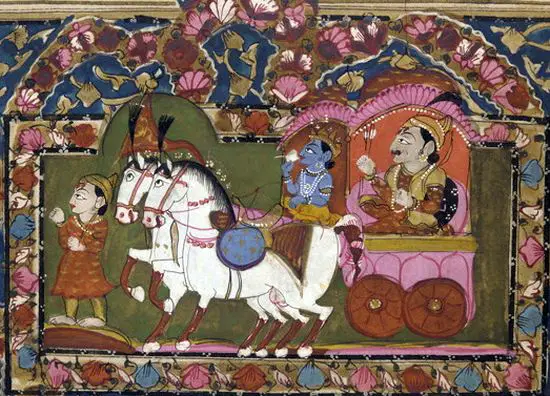The Swastika is regarded as one of the most important symbols in Hinduism (Sanatan Dharma). It’s an extremely special symbol in Hinduism. Every Hindu respects the sacred Swastika symbol. In fact, no Hindu religious ritual is deemed complete without the symbol of Swastika.
Moreover, Swastika holds the status of being one of the oldest symbols made by humans. The symbol is almost 12000 years old. Most of the scholars believe that the Swastika symbol originated in India.
The Swastika symbol looks like a cross having four arms of equal length, after the ends of each arm bent at a right angle. Often dots are added between each arm.
Table of Contents
Importance of Swastika
Swastika signifies good luck, peace, prosperity, auspiciousness, and universal brotherhood. Any Hindu ritual, whether it is a wedding, Satya Narayan Katha, Nav Graha Poojan, Grah Pravesh, or any other Pooja ceremony is not complete without using this symbol.
It is marked all over the objects used in Hindu Pooja Rituals. The Swastika symbol can be seen in abundance on temples, on the cover of books, and is also painted on the walls of houses.
The swastika is derived from Sanskrit word “Swasti” meaning may all be well with you. The Swastika symbol has gained widespread popularity not only in the Hindu Religion but is also used in Buddhism and Jainism.
Use of Swastik Across Cultures and Continents
In fact, Swastik has been used across many cultures and continents. The symbol of Swastika was used in Ancient Greece. It can be found in the remains of the ancient city of Troy.
It was also used by the ancient Druids and Celts, the Nordic Tribes, and even by the early Christians. Adolf Hitler also used the Swastika Symbol.
The Swastika symbol is known by different names in different countries. In China, Swastika is known as ‘Wan.’ In Japan, it is known as ‘Manji.’ In England, it is known as ‘Fylfot.’ In Germany, it is known as ‘Hakenkreuz’ and as ‘Tetraskelion’ or ‘Tetragammadion’ in Greece.
A very renowned Sanskrit Scholar P.R. Sarkar in 1979 pointed out that the deeper meaning of ‘Swastika’ word is ‘Permanent Victory.’ He also stated that the Swastika symbol could take positive and negative meaning depending on how it is drawn.
A right-handed Swastika stands for Lord Vishnu and the Sun, while the left-handed Swastika is a symbol of Kali and Magic.
The earliest Swastika was uncovered in Mezine, Ukraine. It was carved on an ivory figurine, which dates back an incredible 12,000 years.
One of the earliest cultures to use Swastika was a Neolithic culture in Southern Europe, dating back to around 8000 years. It is the area that now comprises the modern Serbia, Bosnia, Croatia, and Herzegovina, known as the Vinca Culture.
The symbol of Swastika can also be seen on the walls of Christian catacombs in Rome, where it appears next to the words, “ZOTIKO ZOTIKO” meaning “Life of Life.”
The Swastika symbol can be seen on the window openings of the mysterious Lalibela Rock Churches of Ethiopia. It is also found in various other churches around the globe.
Buddhists regard the Swastika as the symbol of good fortune, prosperity, and abundance. The swastika is directly related to Buddha.
It is carved on the statues of Buddha, on the soles of his feet as well as on his heart. They believe that it contains the Buddha’s mind.
Ancient Greeks used the Swastika symbol linking heaven and earth. Its right arm pointed to the heaven, and the left arm pointed to Earth.
Pythagoras used the Swastika symbol under the name ‘Tetraktys.’ The Swastika was also used by the Phoenicians as the symbol of the Sun. It was regarded as a sacred symbol by the priestesses.
So, we see that the Swastik symbol was used by many diverse countries and cultures. It is an ancient symbol which was commonly used as charms for bringing good fortune.
The Origin of ‘Swastika’
Much is talked about how this symbol came to be used.
Many link the use of Swastika to the beginning of our earth and the solar system. It is believed that the Universe was formed due to a massive explosion and scattering of energy in all directions. Scientists have named this explosion as the Big Bang.
The energy was scattered in the shape of Swastik. Accordingly, the Swastik symbol was created to symbolize the ‘Sun’ as it was the source of energy for all planets and life that existed on earth.
As Swastika is considered to be the mark of Creation, it is used at the beginning of every auspicious occasion.
What does a Swastik (Swastika) Symbolize
The four arms of the Swastika symbolize the four main directions: North, South, East, West. Also the four Vedas: Rig, Atharva, Yajur, and Sama, the four aims of human life (Purusharthas): Dharma, Artha, Kama, and Moksha, and the four stages of life (ashramas): Brahmacharya, Grihastha, Vanaprastha, and Sannyas.
Religious Significance of Swastika
Now, let us know the religious significance of the Swastika symbol.
The swastika is primarily regarded as the symbol of good luck in Hinduism. It can be seen drawn on doors, walls, and other auspicious places in Hindu homes signifying good luck and well being. It is also used in festivals and Hindu religious ceremonies.
Swastika is Associated with Lord Vishnu
There are about 108 different symbols that are associated with Lord Vishnu, and Swastika is one of them. The swastika is usually drawn on the right palm of Lord Vishnu. It is sometimes held in hand or drawn in some other form around Lord Vishnu.
Swastik as a Symbol of Brahma
When seen from above, Swastika points in all directions simultaneously. Interestingly, it coincides with the four “all seeing faces” of Brahma and so Swastika is regarded to be associated with Lord Brahma.
Swastika as a Symbol for the Sun God
Besides being associated with Lord Vishnu, Swastika is sometimes used as a symbol for the Sun God. It resembles the mid-day Sun’s rays falling in all directions simultaneously. The swastika was used in ancient times as a symbol of nature worship.
Swastika for Life and Preservation
As Swastika is one of the symbols used for Lord Vishnu who protects, sustains, and preserves all life on Earth, so Swastika is also regarded as a symbol of life and preservation.
The swastika is associated with well-being, abundance, and prosperity. As Swastika also represents the Sun God which is responsible for good crops and food production, Swastika becomes a symbol of good luck and well-being.
Swastika as Part of Ashtamangala
Astha-Mangala is part of an age-old Hindu Tradition wherein eight sacred symbols are offered to Gods on various auspicious occasions. These symbols may differ from region to region, but Swastika has been a common feature along with other symbols like Conch/Shell, Lotus, Wheel, Kalasha, Dhwaja (Flag or Banner), Matsya (fish), Elephant, Bull, Sinh (Lion), etc.
So, this was all about Swastika in Hinduism and its use across different cultures and continents. The swastika is one of the core elements of Hinduism.
Moreover, Swastik is an integral part of Hinduism. As we have seen above, the use of Swastika as a symbol of good luck and prosperity is not limited to India alone. It is widely recognized as a sacred symbol in many countries including China, Japan, and Thailand.






